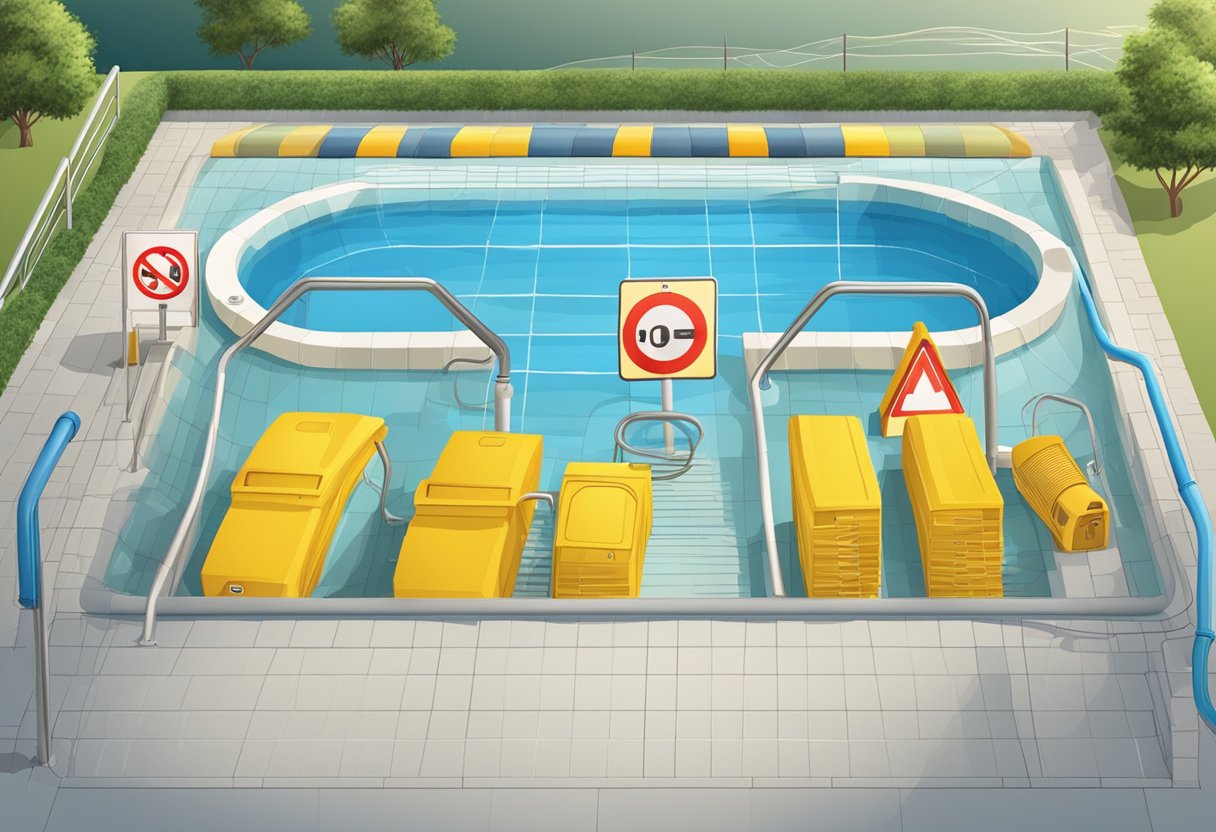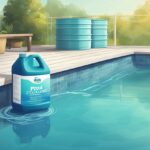Shocking your pool is an essential part of maintaining a clean and safe swimming environment. As a pool owner, it’s your responsibility to ensure that the water is free of bacteria, algae, and other organic contaminants. Regular maintenance, including properly balanced water chemistry, is the foundation of pool care, but occasionally, it becomes necessary to give your pool a more intense treatment.

This process involves adding a large dose of chlorine or non-chlorine chemicals to the pool water to drastically raise the chlorine level for a short period. This high chlorine level is effective at killing bacteria, algae, and other pathogens, essentially “resetting” your water quality. It’s crucial to perform this task following the correct steps and safety guidelines, as handling such chemicals requires caution.
Understanding when and how to shock your swimming pool will keep the water clear and ensure it’s always ready for a swim. Whether it’s after a heavy use period, a rainstorm, or simply as part of your regular pool-care schedule, shocking should be done with precision. Remember to always follow the manufacturer’s instructions regarding dosages, and ensure that your filtration system is operating effectively to distribute the shock evenly and aid in clearing out the debris subsequently.
Understanding Pool Shock and Its Importance
Shocking your pool is a critical maintenance task to keep the water clean and safe for swimming. This process involves the addition of a powerful disinfectant, typically a form of chlorine, to eradicate algae, bacteria, and other contaminants.
Types of Pool Shock
There are primarily two types of shock products that you can use for your pool:
Chlorine-based Shock:
- Contains a high concentration of active chlorine.
- Calcium Hypochlorite: Most common type, usually requires daylight to be fully effective.
- Dichloroisocyanurate: Stabilised, can be used at any time of day.
Non-Chlorine Shock:
- Often referred to as a ‘non-chlorine oxidiser’.
- Active ingredient is typically potassium peroxymonosulfate.
- Advantageous for pools that need immediate use after treatment.
These shock products work to increase the chlorine level rapidly, thereby sanitising your pool by burning off chloramines and organic waste that lead to cloudy water and algae blooms.
When to Perform Shock Treatment
Shock treatment should be done:
- Weekly: As part of your routine maintenance, regardless of the water’s appearance.
- After Heavy Use: Such as a pool party, when the level of contaminants is likely higher.
- After Bad Weather: Heavy rains can introduce various pollutants into your pool.
- When Issues Arise: Such as the presence of algae blooms or when your pool water becomes cloudy.
To determine the need for shock treatment, test your water for combined chlorine—or chloramines—which occur when free chlorine binds with ammonia and organic compounds. High levels indicate it’s time to shock your pool.
Remember, shocking a pool restores water clarity, eradicates harmful pathogens, and ensures your sanitiser works more efficiently. Regular shock treatments help prevent algae outbreaks and keep your swimming environment healthy and inviting.
Step-by-Step Guide to Shocking Your Pool
Properly shocking your pool involves a series of critical steps, from safety preparations to the actual process of introducing the shock agent. Adhering to these steps will ensure your pool water remains clean and safe for swimming.
Safety Precautions and Preparation
Before handling any pool chemicals, it’s paramount that you protect yourself. Don gloves and goggles to prevent skin and eye irritation. Ensure the area is well-ventilated to protect your respiratory system. Read and follow all safety protocols as stated on the product labels.
Calculating the Required Amount of Shock
To determine how much shock you need, test your pool water using test strips. You’re looking to balance free chlorine levels, aiming for a combined chlorine level of 0.2 ppm or lower. Consider factors like pH level, total alkalinity, calcium hardness, and cyanuric acid level. For granular shock products like calcium hypochlorite (cal hypo) or potassium monopersulfate, you’ll often need to pre-dissolve them in water.
Salt water pools and those stabilised with cyanuric acid may require different quantities of shock compared
Pool Water Balancing and Maintenance
Ensuring your swimming pool is consistently clean and safe involves maintaining a delicate balance in water chemistry and engaging in regular filtration and cleaning.
The Role of pH and Alkalinity
Your pool’s pH levels should ideally sit between 7.2 and 7.8, making the water neither too acidic nor too basic. Accurate pH levels allow chlorine to effectively sanitise your pool, preventing algae growth and bacteria proliferation. Alkalinity, measured in parts per million (ppm), should be maintained between 80-120 ppm to stabilise pH levels and buffer against sudden changes. Use a water testing kit to determine your pool’s pH and alkalinity, and adjust with appropriate chemicals—hydrochloric acid to lower pH or sodium bicarbonate to increase alkalinity.
Routine Filtration and Cleaning
A proper filtration system, including a robust pool filter and pump, is critical to keep pool water clear and hygienic. Aim to run your pool pump for at least 8-12 hours a day, as it circulates water and prevents stagnation. Regularly clean the filter to remove accumulated debris and maintain optimal performance. In a saltwater pool, check the salt levels and the chlorinator to ensure they are producing the right amount of sanitizer. UV rays from the sun can diminish chlorine levels, even in saltwater pools, so it is particularly important to monitor and adjust chlorine regularly. Incorporate maintenance, such as vacuuming the pool floor and skimming the surface, into your weekly pool maintenance routine to prevent a potential green pool situation.
Troubleshooting Common Shocking Issues

Occasionally, you may encounter issues after shocking your pool, such as cloudy water or algae blooms. Below you’ll find specific strategies to address these concerns effectively.
Dealing with Cloudy Water After Shocking
After you’ve shocked your pool, it’s possible to experience cloudy water. This is often due to high levels of chloramine, which can be created when chlorine reacts with organic substances like sweat or oils. To rectify this:
- Test your water to ensure proper chlorine and pH levels. Your chlorine level should be between 1-3 ppm, and pH should be 7.2-7.6.
- Run your filter continuously until the water clears, as this will help remove particulates causing cloudiness.
- If cloudiness persists, use a pool clarifier to agglomerate small particles into larger ones, which your filter can then catch.
Preventing and Handling Algae Blooms
Algae growth can lead to a green pool and is not only unattractive but can harbour dangerous pathogenic bacteria. Preventing and treating algae requires a proactive approach:
- Prevent algae blooms by maintaining proper chlorine levels and balanced pH, as well as regularly brushing and vacuuming your pool.
- To treat algae, check your combined chlorine (CC) level with a test kit. If CC is high, it indicates that your pool has chloramines and requires additional shocking.
- Ensure the pool is receiving adequate sunlight, as sunlight helps break down some types of chlorine compounds that contribute to algae growth.
- Brush thoroughly before and after shocking to loosen algae from pool surfaces. Persistent algae may necessitate multiple shock treatments.
- If you’ve had a pool party or heavy usage, it’s a good idea to shock your pool afterwards to ensure any increased organic load is managed.











